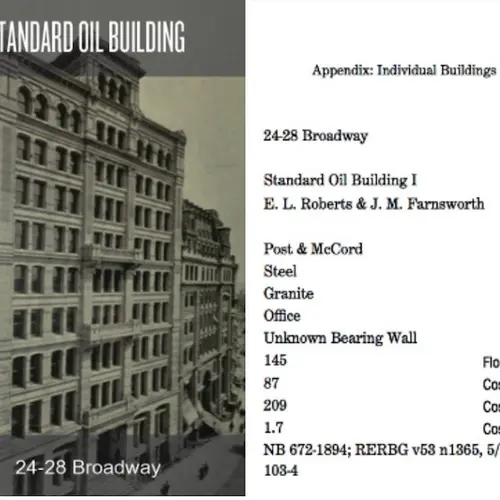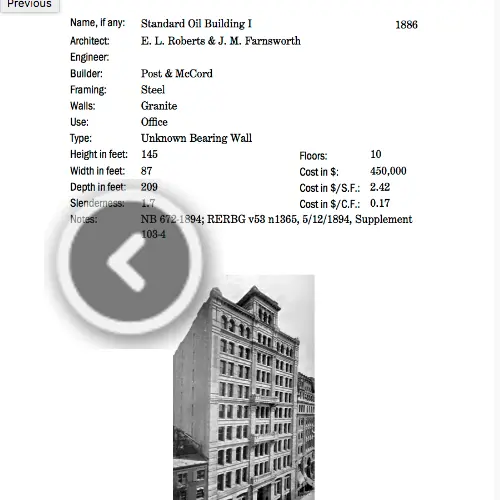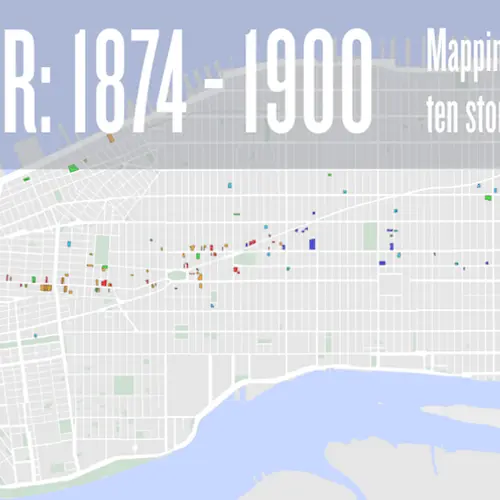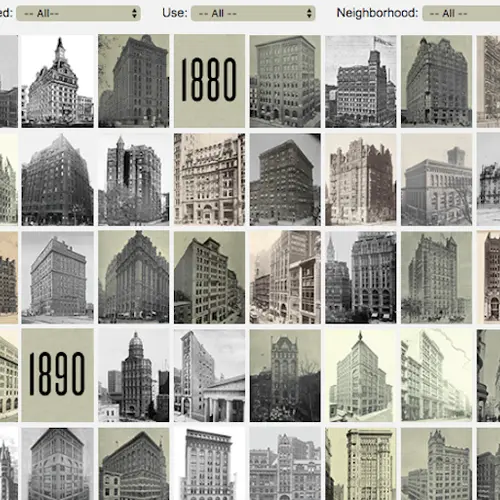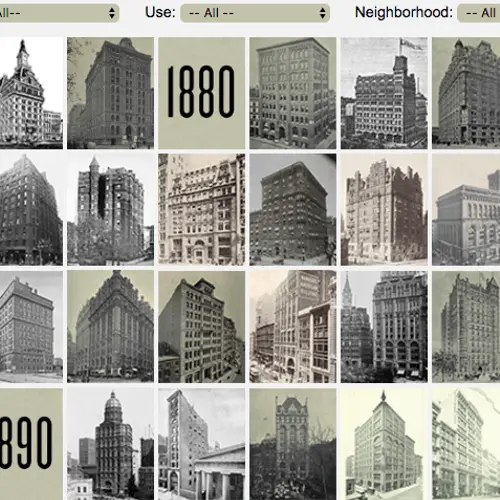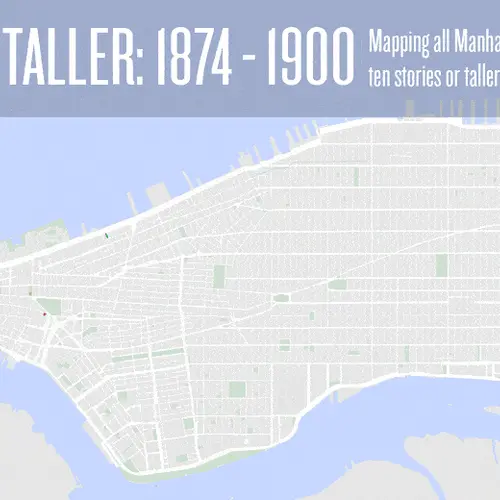‘Ten & Taller’ exhibition maps the rise of Manhattan’s first skyscrapers from 1874 to 1900
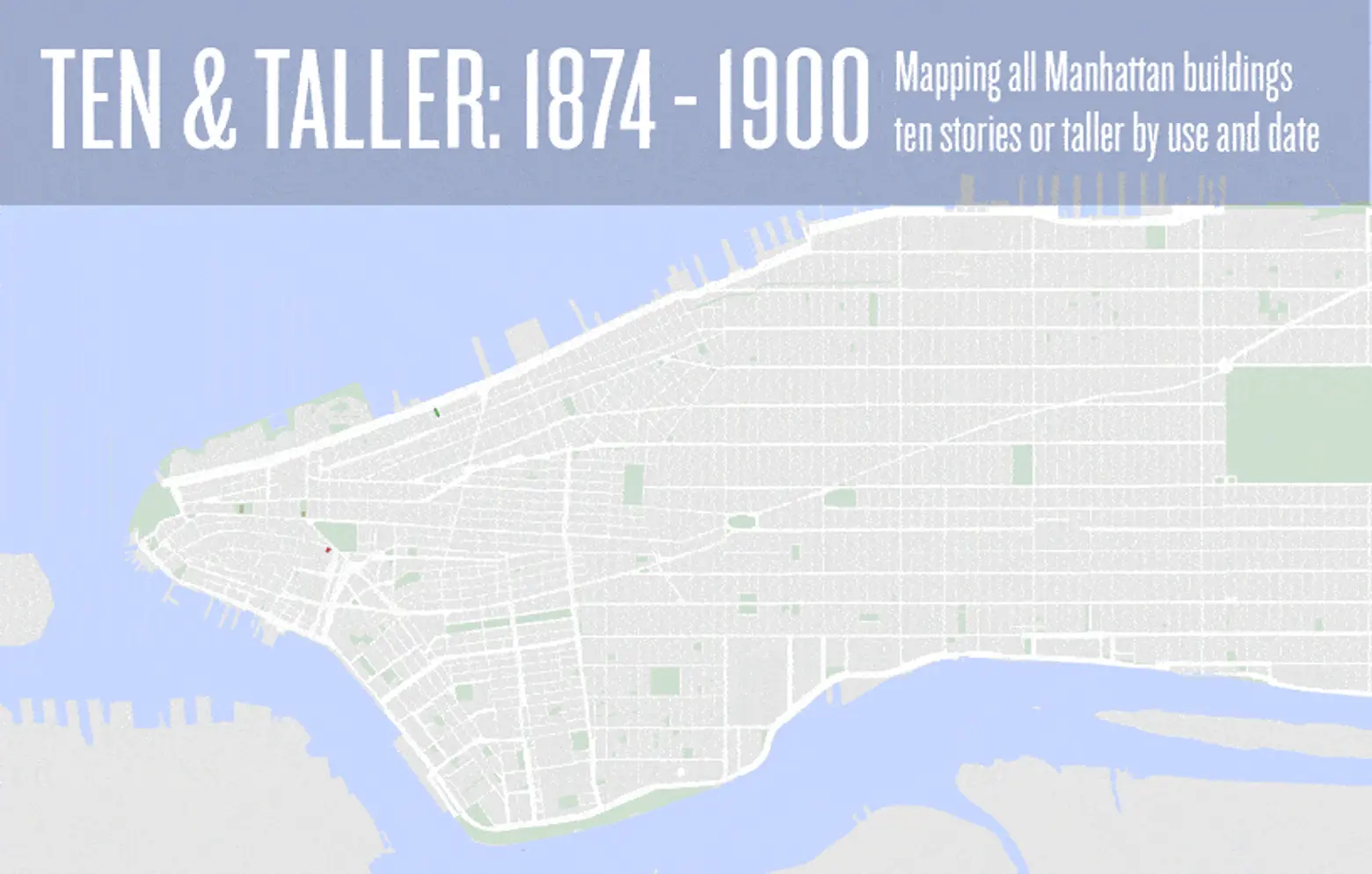
Though it might seem that each recent generation attempts to take credit for the rise of the futuristic “skyscraper,” buildings that rise ten floors or higher were born with the Gilded Age. “Ten & Taller: 1874-1900,” on view through April 2017 at the Skyscraper Museum in Battery Park City examines every single building 10 stories and taller that was erected in Manhattan between 1874 through 1900 (h/t Curbed). Beginning in the mid-1870s, the city’s first ten-story office buildings rose on masonry to 200 feet high with spires that stretched 60 more feet. By 1900 New York City could boast of 250 buildings at least as tall; the world’s tallest office building was the thirty-story 15 Park Row; framed with steel, it soared to 391 feet. As technology brought elevators and new methods of construction, the vertical expansion was becoming a forest of tall towers.
The “Ten & Taller” project began as a way to use and share the treasure trove of research conducted and documented by engineer and historian Donald Freidman on the structural systems these early buildings utilized. This incredibly comprehensive survey–every building of ten or more stories erected in Manhattan through 1900 was accounted for–begged for visualization. The museum created an exhibition that combines three methods of viewing the city’s first push skyward.

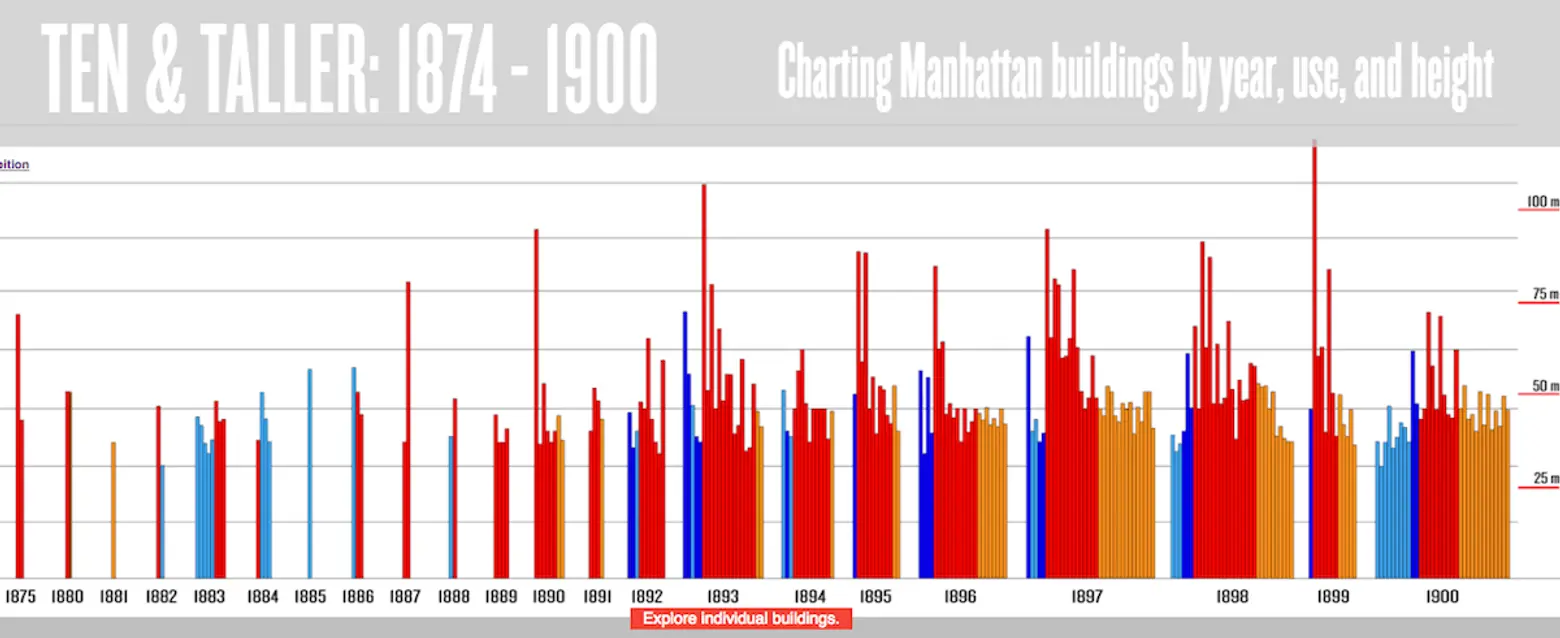
An eye-opening map shows all Manhattan buildings from 1874 to 1900 that are ten stories or taller by use and date. From a grid we learn more about each building; for example, the Standard Oil Building at 24-28 Broadway, built in 1886 by E.L. Roberts and J.M. Farnsworth, rose to 145 feet/10 stories with a steel frame with granite walls. The office tower cost $450,000 at the time–or $2.42 per square foot. A colorful timeline charts the explosion of ever taller buildings–and more of them–with the passage of very little time. The aforementioned technological advances made tall buildings possible, but it was the unprecedented growth of New York City itself–the city’s population went from less than a million in the 1870s to over 3.4 million in 1900, that sparked the drive to go vertical.
As we map the city’s first skyscrapers we learn some obvious and surprising facts: The density of office buildings concentrated in lower Manhattan–as well as the number of them in the area taller than 200 feet, increased dramatically after 1893, while hotels and apartments towered over the uptown scene. Light manufacturing buildings that also had offices and showrooms–what we now call lofts–accounted for nearly a third of high-rises in the last years of the 19th century.
[Via Curbed]
RELATED:
- Detailed Chart Shows the World’s Tallest Building Constructed Every Year
- Skyscraper Museum Reveals Interactive Timeline of the Tallest Buildings Throughout History
- Detailed Infographic Shows the Ebb and Flow of NYC Skyscraper Construction
- Infographic: How NYC’s Supertalls Compare in Height and Girth to Global Towers
